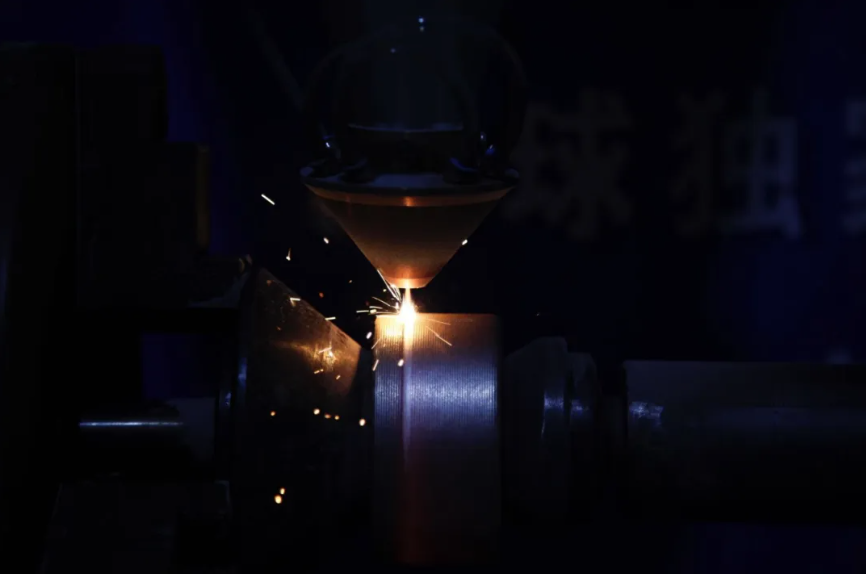Automated laser welding improves MDM yields
Hiring and training skilled personnel is not only costly, but in today's labor market, it is becoming increasingly difficult for companies to find and retain this talent. Automated laser welding systems dramatically reduce the need for skilled personnel.
For example, once an engineer or technician has specified and stored all aspects of a welding application using the machine software, the operator can safely initiate the welding process with limited access to functions through the GUI.
Avoiding subjective judgment on the operator's part, combined with the use of in-situ vision, process monitoring, laser monitoring, and post-process validation features, provides consistent production, increased yields, and reduced scrap. Whenever there is any deviation from the specified limits in the process, the machine makes the necessary adjustments or stops the process and alerts the operator. This is clearly a benefit for any application. It would be especially beneficial when welding parts that have already had their value invested through upstream processing or parts involving high-value materials.
All of these eventual benefits will actually translate into final benefits. Each of these automation benefits will directly or indirectly reduce the total cost per part.
Automatic loading/unloading of parts
Equipped with various infeed options, including hoppers, conveyors, or pallet loaders, connected to robots that feed parts into and out of the system. Automation can significantly reduce labor costs and the impact of labor on quality. In some cases, pick-and-place robots can also be used for machining motion, often in conjunction with 3D vision systems. This automated weld positioning can be cost-effective.
The ability to perform proper part identification and positioning for each weld. This pre-weld process also provides pass/fail indication based on part assembly. In the manual process, the operator needs to place the part into a fixturing device and then securely clamp it before welding. Sometimes this simple task can be accelerated by using a rotary table to simultaneously weld and load/unload. But in an automated system, a machine vision system can separately view parts located in a hopper, on a conveyor, and/or in a pallet. It can recognize unique physical details and datums and/or barcodes, or perform other sliding inspections.
In-process monitoring
To provide process change alerts, plan preventive maintenance if there are deviations from limits in the process, or stop production to avoid assembly of defective parts, Coherent did not rely on a third-party solution but developed an in-house system, Coherent SmartSense+, which is designed specifically for micro-welding and provides cost-effective and comprehensive in-process monitoring capabilities. A key component of SmartSense+ is a unique optical system that captures and analyzes light from both the backward reflected laser and the process itself. It can also include acoustic and other signals. This data can be used to determine if the welding process is actually occurring, to monitor horizontal and vertical part gap widths, and to detect changes in process and enclosure airflow rates when gases are used. It can also assess the presence of holes, voids, and microcracks in the weld.
Another advantage of in-process monitoring is the use of signals to optimize weld schedules, such as when plasma is forming and when the weld is unstable, and relate these to laser and optical parameters. Application engineers have proven this feature to be very useful in many situations, even for users with decades of welding experience!
Data acquisition before, during, and after machining
The ability to perform proper part identification and positioning for each weld. This pre-weld process also provides pass/fail indication based on part assembly. In the manual process, the operator needs to place the part into a fixturing device and then securely clamp it before welding. Sometimes this simple task can be accelerated by using a rotary table to simultaneously weld and load/unload. But in an automated system, a machine vision system can separately view parts located in a hopper, on a conveyor, and/or in a pallet. It can recognize unique physical details and datums and/or barcodes, or perform other sliding inspections.
Simple, powerful control software
All of these automation functions involve many different technologies and approaches, and integrating them individually would be challenging. But in Coherent's fully automated laser welding systems, the weld is controlled from all sides by Coherent Laser FrameWork, a next-generation software platform with an easy-to-use GUI and object-based process setup/execution. With limited access to the software's features, operators will never forget to call up or initiate any automation or data logging functions.
Cost-effective solutions
Automated laser welding systems can reduce the cost of many MDM applications. However, it should not unduly increase the cost of capital investment. Specifically, there is no value in purchasing features that the application doesn't really need.
That's why Coherent offers flexibility in a wide range of options, from feeding options to using RFID tag readers. It's not just about providing a complete system, but an optimized system: optimized just right for the customer's specific needs.







Comments
Post a Comment